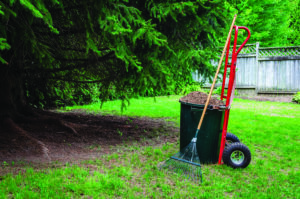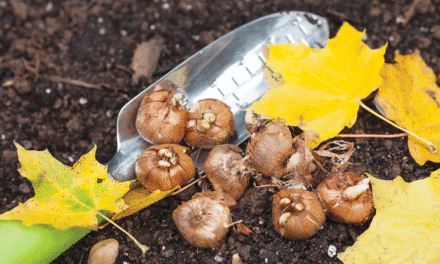The October to-do list is shorter than past months, but the tasks are no less important.
Try to tidy up the garden, plant spring flowering bulbs, add to your perennial garden, and incorporate shrubs with glorious fall color to your landscape before cold days arrive.
Week 1
• Flower buds are forming, or are already formed, on spring-flowering shrubs.
To prevent reducing next year’s bloom, don’t prune spring-flowering shrubs like azaleas and rhododendrons until after they bloom next spring.
• Fertilize your yard with Milorganite for the fall growing season. Milorganite is a Chesapeake Bay friendly organic fertilizer utilized by many golf courses.
Make your yard golf-course green with the natural iron that is in Milorganite.
Week 2
• Daffodil bulbs, alliums and other spring-flowering bulbs can be planted now.
Plant them in a sunny spot, in well-drained soil.
Tulip bulbs should be planted from mid-October through November to prevent them from sprouting prematurely.
• Fall is a great time for feeding plants before they go dormant. Espoma’s Tone products offer Bio-tone beneficial microbes, which help the plant to develop deeper roots, and superior blooms.
They provide a complete and balanced feeding using only natural ingredients, not using harmful salts or other man-made elements which are harmful to the environment and plants.
These products are also approved for organic gardening. There is a tone for every plant, try one today.
Week 3
• Be sure to rake up and remove leaves and needles up from the lawn.
It is important to remove dead leaves that in a dense mat could smother your grass.
Mow a little lower and bag up all clippings.
The micro-organisms that decay grass clippings become dormant when the soil temperatures drop below 53 degrees.
• This is a great time to work with perennials. Cut back perennial foliage after a killing freeze to make the plants ready for the next growing season.
Now is a great time to plan ahead and divide and move any perennials that have gotten too large.
Week 4
• Now is the time to bring in any houseplants that remain outside.
Take time to check each plant for insects of diseases that may be hidden underneath leaves and cut back on feeding and watering to allow the plants to reacclimate to the inside.
Make sure that the plants’ new home inside still provides enough daily sunlight.
• When harvesting your fruit trees, dispose of all rotten and unused fruit.
Doing this will help avoid any over-wintering diseases and keep insect problems from occurring.
Do the same with any fallen grapes, making sure none are left on the vines.
(Editor’s Note: Ken Morgan is the owner of Robin’s Nest Floral and Garden Center in Easton, Md.)




